The diagram shows an equiconvex lens. What should be the condition on the refractive indices so that the lens becomes diverging?

2μ2>μ1−μ3
2μ2<μ1+μ3
2μ2>2μ1−μ3
2μ2>μ1+μ3
The correct Answer is:B
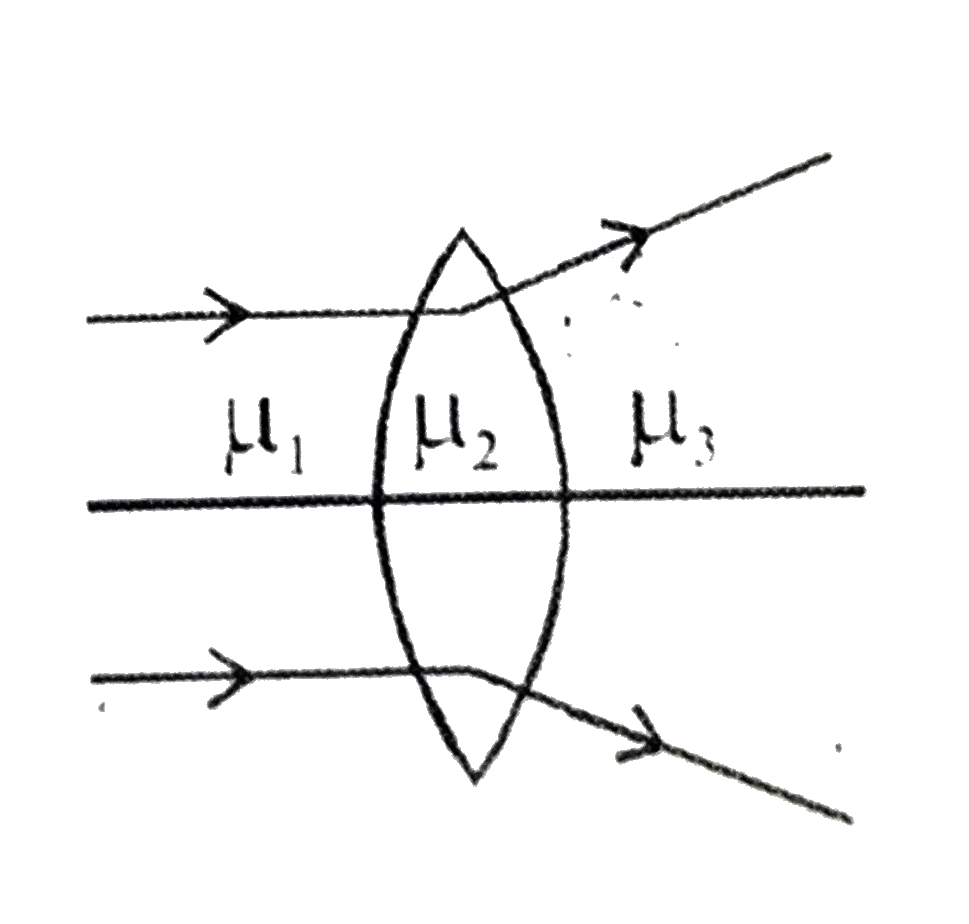
μ3v−μ1u=μ2−μ1R1+μ3−μ2R2
⇒μ3v−μ1∞=μ2−μ1R+μ3−μ2(−R)
μ3v=μ2−μ1R−(μ3−μ2)R<0
⇒ For diverging nature v<0
μ2−μ1R<μ3−μ2R⇒2μ2<μ1+μ3
Topper's Solved these Questions
Similar Questions
The figure shows an equi-convex lens. What should be the condition of the refractive indices so that the lens becomes diverging?
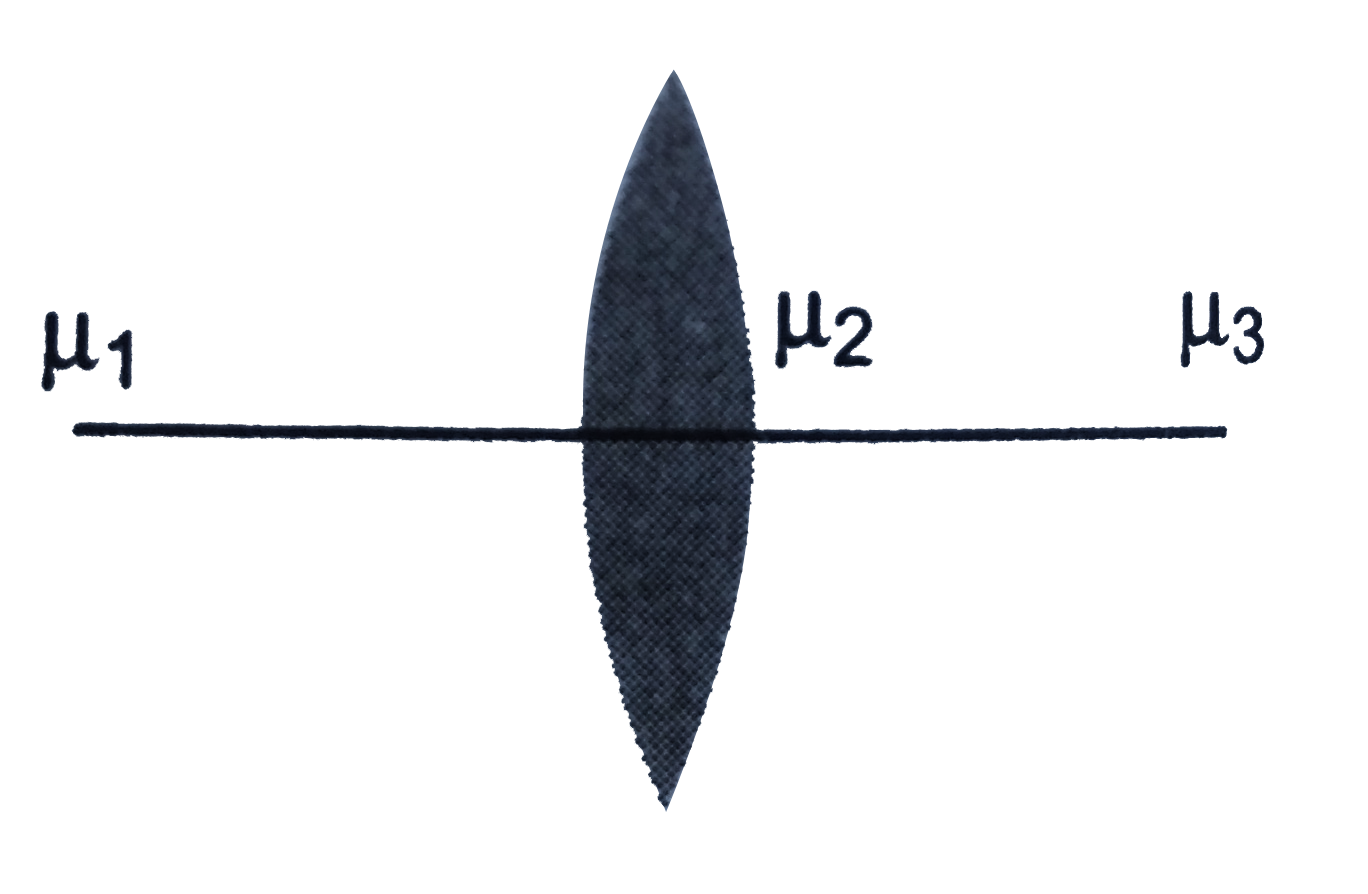 View Solution
View SolutionThe figure shows an equi-convex lens. What should be the condition of the refractive indices so that the lens becomes diverging?
 View Solution
View SolutionFigure, shows a concavo-convex lens μ2. What is the condition on the refractive indiecs so the at the lens is diverging?
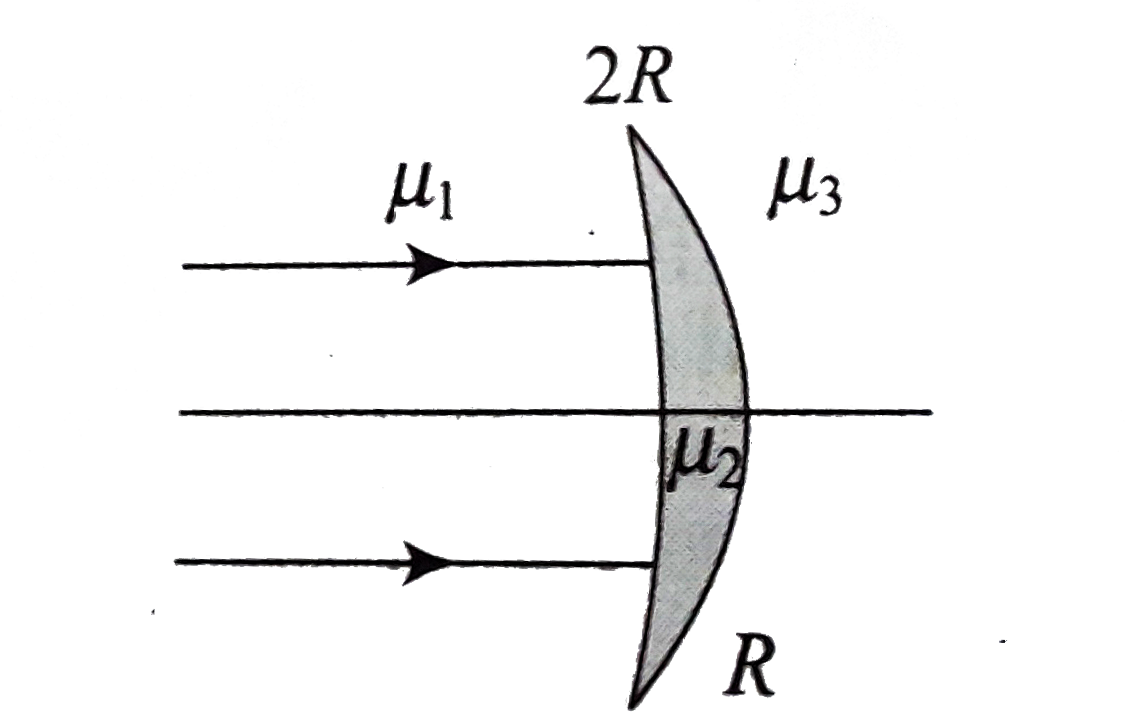 View Solution
View SolutionObject O is kept in air in fron of a thin plano convex lens of radius of curvature 10cm. It's refractive index is 3/2 and the medium toward right of plane surface is water of refractive indec 4/3 . What should be the distance x of the object so that the rays become parrallel finall?
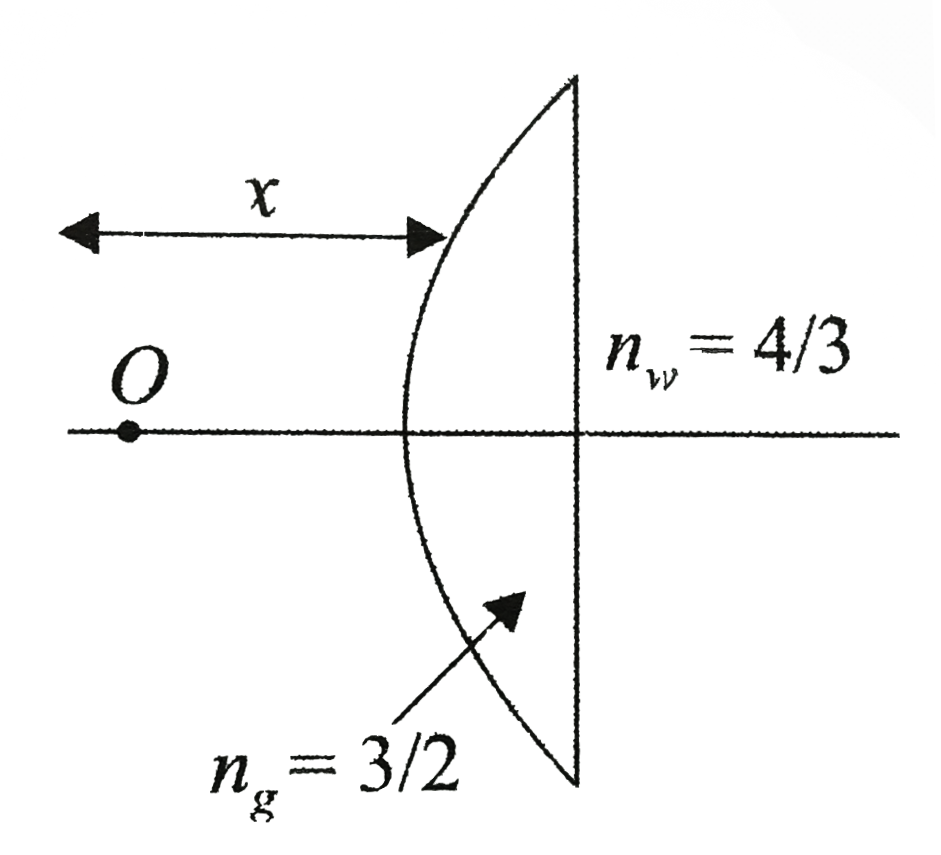 View Solution
View SolutionThe figure shows and equiconvex lens of focal length f. It the lens is cut along PQ, the focal length of each half will be
 View Solution
View SolutionAn object O is kept in air in front of a thin plano-convex lens of radius of curvature 10cm. Its refractive index at 3/2 and the medium towards right of the plane surface is water of refractive index 4/3. What should be distance x of the object so that the rays becomes parallel finally?
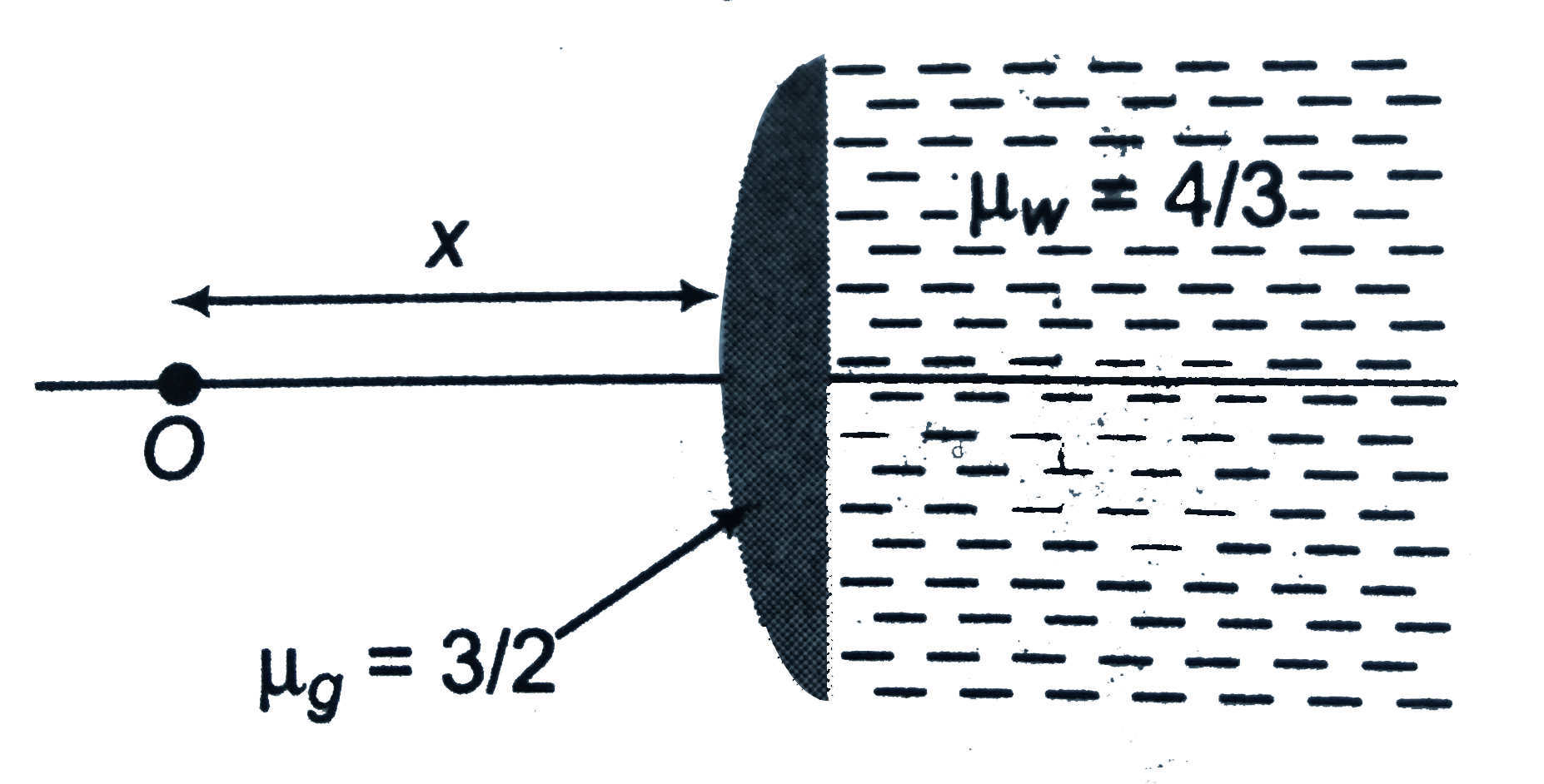 View Solution
View SolutionAn object is placed at the focus of an equiconvex lens. Match the following
 View Solution
View SolutionA glass slab of thickness 2cm and refractive index 2 is placed in contact with a biconvex lens of focal length 20cm. The refractive index of the material of the lens 1.5 . The far side of the lens is silvered. Where should an object be placed in front of the slab so that it images on to itself?
View SolutionAn equiconvex lens of focal length 15cm is cut into two equal halves in thickness. What is the focal length of each half ?
View SolutionAn equi-convex lens of focal length F in air is is cut into two halves along the plane perpendicular to the optic axis. One of the halves is placed between a fixed object and a screen separated by distance of 90 cm . Two images are formed on the screen for two different positions of the lens with magnification 2 and 1/2 respectively. Find the value of F . what would be the value of the focal length of the equiconvex lens if the lens is immersed in water ? Refractive index of the material of the lens is 1.5 and that of water is μw=4/3.
View Solution

